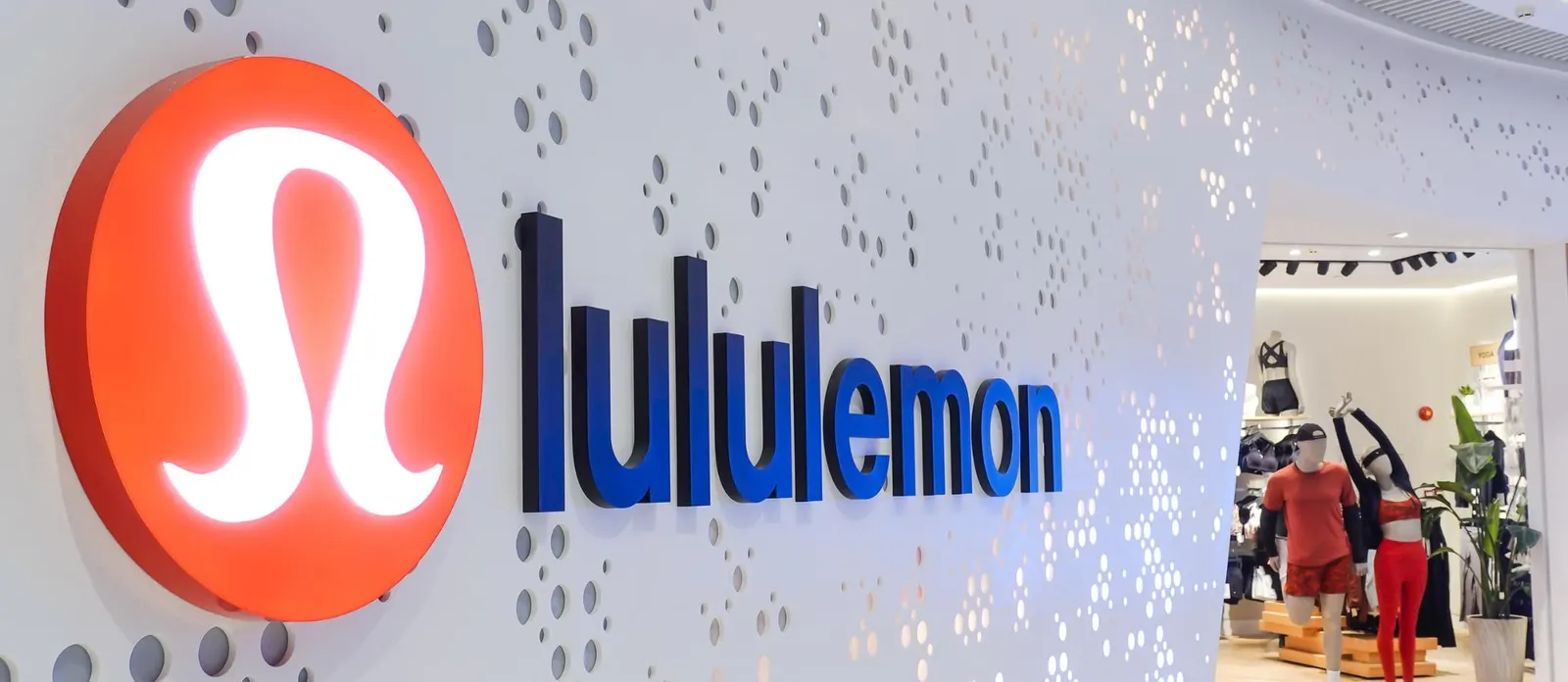Copyright forbes

Chip Wilson’s call for Lululemon to rediscover its muse isn’t wrong. Yet as athleisure plateaus, it’s worth asking—does the future still lie with the yoga elite? Source: ID 208958212 | Lululemon © Photomall | Dreamstime.com Last week, lululemon founder Chip Wilson took out a full-page ad in The Wall Street Journal titled “lululemon: In a Nosedive.” It was an open letter to shareholders, board members, management, and pretty much anyone else who’d listen. Wilson used his ad to declare why he thought his former company was losing its soul. He accused the board of “systematically dismantling the business model.” Management was prioritizing short-term margins at the expense of innovation. And the brand had forgotten its muse: “the woman who inspires culture.” In his view, lululemon has become just another corporate machine, chasing quarterly earnings instead of bold ideas. The numbers seem to back him up. After years of double-digit gains, lululemon’s revenue growth has slowed to the low single digits. Sales in its core U.S. market have started to slip. Margins are under pressure, too. The company has warned that tariffs and rising import costs could shave as much as $240 million from gross profits in 2025. And investors aren’t happy. Since January, the stock has lost over half its value. It’s never a good thing when your founder pillories you in the public square. But Chip Wilson has never been shy. He’s also not always right. Lululemon’s problem isn’t that its founder is gone, as Wilson argues. It’s that the company discovered what W. Chan Kim and Renée Mauborgne call a Blue Ocean: open space that's free from competition. That ocean is now red. And a better product alone won’t help if the culture that it embraced has evolved faster than the company has. Still, Wilson isn’t entirely wrong either. And there’s plenty to learn here for the rest of us. MORE FOR YOU A Brand Under Pressure Lululemon Athletica was started in 1998 when Wilson, a Canadian surfer and entrepreneur, decided to take a yoga class. In the class, he noticed that many of the women were wearing cotton leggings that were saggy and soaked with sweat. Seeing an opportunity, he set to work designing sweat-wicking pants from technical athletic fabric—the kind used in surfwear. His small retail shop doubled as a yoga studio and quickly became a local hub for women who saw themselves in the brand. Over the next decade, Wilson did more than just grow a brand—he created a new category. Athleisure blurred the line between performance gear and everyday wear, reshaping how a generation of women dressed, moved, and worked out. Of course, success invites imitators. Competitors like Alo and Vuori entered the market at the high end, leveraging social media to create buzz. Gap launched Athleta for mid-level consumers. Target began to offer stylish workout wear at a fraction of lululemon’s price. The category that lululemon created got crowded with competition from all sides. At the same time, growth in the category started to slow. In 2014, NPD Group estimated the U.S. activewear market to be $35 billion. That number grew to $94 billion by 2021…and it’s been nearly flat ever since. As people went back outside after the pandemic, they started looking for something else to wear besides the yoga pants they wore at home. Within that context, some of Wilson’s criticism seems off base. The pressure on lululemon isn’t purely a result of their own execution. Moreover, Wilson attributes lululemon’s problems to the loss of their founder—the loss of him. As he sees it, “A company bereft of a visionary loses its singular voice for product and long-term strategy, a strategy that builds a moat around success.” That’s certainly a cheeky level of self-confidence, but it’s misplaced. There’s simply no strategic moat around yoga pants—he just found them first. And while Wilson had a great idea, he didn’t really grow the company. In 2013, lululemon’s revenue was $1.6 billion when Wilson stepped down as chairman. Last year, it was $10 billion. Most of lululemon’s growth happened after he left. No founder needed. Wilson’s savior mentality aside, founders can offer a company focus and clarity. But they can also create a conceptual box that’s hard to escape from. After all, when Mel and Patricia Ziegler sold Banana Republic to the Gap, the company still sold safari clothing. It’s hard to imagine how Banana Republic would have grown over the next three decades by banking on bush hats and ghurka shorts. In the decade since Wilson stepped down, the company focused on global expansion, digital commerce, and serving new customers. That was good. And in the last few years, the challenge has changed, but their strategies haven’t. Real World Insights Wilson urges lululemon to stay focused on its muse: the woman who inspires culture, not just follows it. On the face of it, that’s a smart move. Companies succeed when they have a widespread and intuitive sense of the people they serve. I wrote a whole book about that. The challenge, of course, is that their muse may have moved on. The original lululemon customer was an upscale, yoga-obsessed suburban woman who drove a Land Rover and searched for meaning as much as she shopped for spandex. But it’s now over a quarter century since Chip Wilson first walked into that yoga class. And in that time, the cultural landscape has evolved. Wilson’s woman still exists, but she’s no longer the center of gravity. Culture now moves faster across new tribes, from climbers and runners to urban hikers and wellness minimalists. According to the Centers for Disease Control and Prevention, 10 million Americans practiced some form of yoga in 2002, representing only 5% of adult Americans. But by 2015, that number had grown to 37 million. And it hasn’t grown much since. What happens when the trend that carried you flattens out? What do you do if the women who inspire culture are now inspired to go hiking? Do you abandon yoga pants and start making hiking boots? The answer is to understand the larger ideas that your brand represents, like wellness and self-actualization. You then need to ensure you’re renewing who you’re focused on, developing first-hand empathy and intuition for the people who share those ideas today. Nike started out by making running shoes for Baby Boomer guys in the Pacific Northwest. But they didn’t just stay with them. They’ve been able to constantly renew their connection to culture and move beyond their original “muse,” embracing a younger, more racially and culturally diverse group of people. To their credit, lululemon has been able to get beyond its original muse. They even make pants for guys like me. Chip Wilson may not like who he sees in lululemon’s stores. That’s his problem. Not ours. Of course, I’m probably not lululemon’s muse for men. But without a clear muse, every move — men’s, performance, global — feels additive, not directional. That’s true for the rest of us. Figure out who you’re serving today. Spend time with them in the real world. Put aside your tracking data and syndicated research. And ask yourself: What do we know about these people that no one else knows? Lead with Creativity Wilson claims the company’s merchants and MBAs have strangled creativity. Most business schools teach students how to analyze a situation and find the “right answer.” Few spend time developing graduates with a facility for creativity and ideation. When those same people enter the business world, they focus on benchmarking what already works instead of inventing what’s next. But creativity isn’t tied to a job title. I know plenty of merchants and strategists who are wildly inventive, and plenty of designers who aren’t. What really matters is culture—whether teams are rewarded for generating heretical ideas that break patterns rather than perfect them. Benchmarking last year’s sales is a recipe for sameness. Companies don’t innovate by repeating what worked; they innovate by learning what’s changed. And that’s where I differ wildly with Chip Wilson. While I haven't worked with lululemon, the people I've met from the company have all been top-tier talents. They’re smart and thoughtful and think about overall experiences, not just individual products. Wilson sees talent as either creative or not. Ample research shows that people’s creativity is a product of their environment. That, too, is true for the rest of us. As you lead your team, are you encouraging them to come up with ideas no one’s thought of before? When you ask them to design a toaster, are they coming back with fifty new ways to heat bread? If not, that’s a reflection of your leadership and the culture you create. It has little to do with their job title. Curate Your Offering Wilson is right about one thing: lululemon shouldn’t try to be everything to everyone. He calls it the “Gap‑ivization” of the brand — a clunky term, but a fair warning. Gap thrived in an era of mass markets and monoculture. We now live in an age of microtribes and self‑expression, where people are more defined by what they leave out than by what they include. Curation matters more than comprehensiveness. The best brands and the best leaders know how to edit. They focus on what truly matters to their audience, trimming away everything that blurs the story or dilutes the magic. In an age of abundance, leadership is increasingly an act of subtraction. The goal isn’t to have more, but to have meaning. For lululemon, that means being clear about which communities it truly serves and what experiences it wants to own. Expanding into menswear, or performance, or community initiatives doesn’t have to dilute the brand — it can sharpen it, if done intentionally. The art is in deciding where not to go. Great companies grow not by adding endlessly, but by knowing precisely what to leave out. For the rest of us: don’t try to be everything to everybody. In a crowded market, you’ll end up being nothing to nobody. The Larger Lesson Companies fail when they lose sight of their customer. They fail when they benchmark their way into a sea of sameness. They fail when they try to be everything to everyone and end up being nothing to no one. But they also fail when they can’t grow beyond the narrow vision of their founder. On that front, lululemon has succeeded. They’ve done quite well without him. The real question is what kind of company lululemon becomes next. The opportunity now isn’t to look backward to the muse who once inspired the brand, as Wilson suggests. It’s to rediscover a new muse in a different time, in a different form, before anyone else does. As a founder myself, I can empathize with Chip Wilson’s frustration. His love for the company he created is unquestionable. But his decision to air his grievances in a full-page ad is an odd one. We might all like to have that kind of cash to throw around. Perhaps Wilson could be a little bit more grateful to lululemon and its management team for making him the money to do so. Editorial StandardsReprints & Permissions



